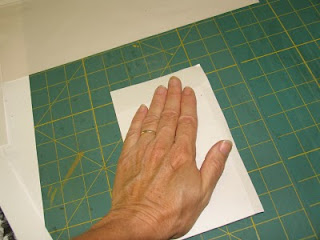It has been an experimenting year for me so I wanted to try out different methods of transfering image to block. I vary my own approach, depending on what my plan is with a certain image.
For multi-color woodblock prints, I almost always carve the key block and print on hanshita paper as many times as I will need color. For reduction blocks, it really doesn't matter so much; if my composition is complex and I need to work out things in Photoshop first, then I might use one of the methods below or simply transfer with tracing paper.
Most of my designs are drawn straight on the block with sumi ink. It really just depends on what print, how much detail, method, etc. But I wanted to add a few more methods to my arsenal, just in case. These three are very suitable for highly detailed work and for printouts from any printer.
Left to right, these are three printouts from my computer. First is
Studio Paper, a transfer medium which I purchased online at
http://www.imcclains.com/.
In the middle is iron-on t-shirt transfer for ink-jet prints, available at any office supply store.
Last is the hanshita paper, a tracing paper attached lightly to a tougher sheet. This paper goes through any printer and is availabe from the supplier above and also from the Baren Mall at
http://www.barenforum.org/ click on Baren Mall from there.
I first cut the three printouts to size; I'm working on 4x6 shina blocks.
The Studio Paper, a waxy paper that leaves the ink from the ink-jet printer very "wet" and requires little pressure to transfer, gave me a very light printout, although the detail was fine enough.
I simply lined up the corner of the block and pressed down lightly with a "doorknob-baren". Any pressure implement will do. The paper is slick and the ink is still wet so care is needed to avoid blurring.
I checked as I went along to see how the transfer was coming along. The Studio Paper transfered quickly and cleanly with very little pressured.
Overall, I was impressed with the detail, although I would have liked the ink to be a tad darker on the block. I am transfering on bare blocks for this experiment and usually I would have tinted the blocks with walnut or gray ink to help later in carving.
Aside from the lightness of the transfer, the Studio Paper worked as advertised! I'm always a bit skeptical about these products but this one works.
Next I will try the iron-on stuff. Last picture is a close up of the detail from the studio paper transfer.



















